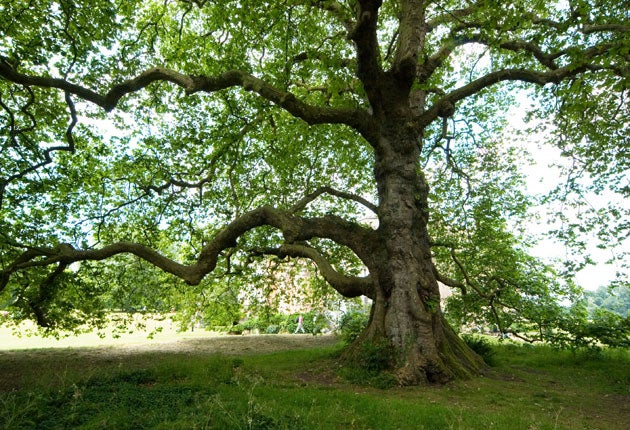Fast-spreading new disease threatens plane trees

With its broad canopy and majestic height, the London plane tree is as intrinsic a part of the capital's Royal Parks as the deck chairs on the lawns of St James's and the rowing boats on the Serpentine. But now the ubiquity of Plantanus hispanica is under threat from a fast-growing fungal menace previously unknown in Britain.
Tree experts at the Royal Parks, which oversees some of London's most famous green spaces including Hyde Park and Kensington Gardens, have discovered a new disease called Massaria in around 200 plane trees, necessitating the removal of infected branches before they shear off and fall to the ground.
The arrival of massaria in Britain presents a new problem for arboriculturists by introducing an apparently fast-spreading pathogen into one of the country's most widespread urban trees. The disease had been previously known in Germany and the Netherlands but was unknown in the United Kingdom until last year, when tree workers at the Royal Parks began to notice dying branches in Hyde Park, Green Park and St James's Park. It has now also been reported by tree officers in other London boroughs.
Although the disease is not known to kill trees, experts at the Forestry Commission have warned that its ability to kill individual branches has created a "risk to public safety" and issued guidance to local authorities suggesting increased monitoring of plane trees to remove wood before it becomes an "unacceptable hazard".
The Royal Parks, which said the worst infestations have been found in Hyde Park, Green Park and St James's Park, said it did not expect to have to fell trees as a result of massaria but confirmed that it could eventually lead to the "loss of canopy shape" in individual planes. A spokesman said: "We are recording all data relating to massaria and will review our management procedures based upon these findings. The good news is that this problem has not affected the overall health of the trees, despite involving the pruning of affected branches. However, we are conscious that the trees will need early and sympathetic treatment to help protect them."
The disease, also known as Splanchnonema platani, affects trees by infecting a V-shaped section of each branch and stripping the bark away from larger branches. Death can occur in as little as a year in branches up to 20cm in diameter, requiring tree experts to take preventative action by sawing off infected wood before it can splinter and fall down.
A Royal Parks source said: "It's going to be a big problem from now on."
Massaria is the latest new pathogen to attack a key British tree species. A previously unknown bacteria has been found in the English oak, which causes specimens to "bleed" black fluid and can kill within five years.
The disease, called acute oak decline (AOD), is so virulent and lethal that foresters believe it could devastate the countryside and urban green spaces even more than Dutch elm disease. The Forestry Commission has so far identified 55 sites with AOD across southern England, the Midlands and East Anglia.
Although massaria is less lethal, experts believe it has the potential to spread rapidly throughout Britain, particularly when trees are "stressed" by periods of hot, dry weather.
Join our commenting forum
Join thought-provoking conversations, follow other Independent readers and see their replies
Comments